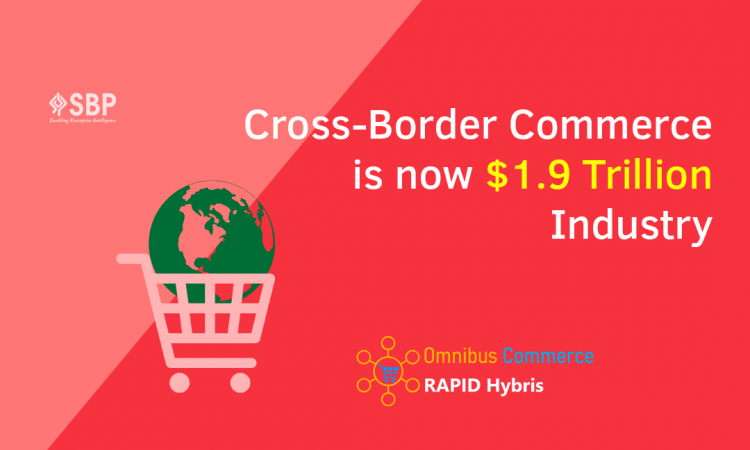
How Internationalization Support from SAP Commerce (HYBRIS) Powers Cross-Border Commerce
With globalization in motion and faster modes of international transport, Cross Border Ecommerce has become another hot trend that is catching up. Internet and bandwidth penetration along with complementing technologies (such as cloud computing) have been profoundly shaping customer behavior and expectations. Efficient technological infrastructure leads to a large spectrum of online shopping possibilities that expand beyond national borders. Cross-border Ecommerce has benefited from marketplace efforts (such as eBay, Amazon, Alibaba) to establishing itself through efficient online payments, warehousing and shipping. Online marketplaces focus on building platforms that fit local customer needs by providing quality services, gaining customer trust and act as an important driver for cross-border purchases. In 2018 alone, U.S. merchants exported over US $57 billion worth of goods to global markets, with nations like India and Australia purchasing US $2 billion each and China purchasing nearly US $30 billion and this number keeps increasing with the rising Ecommerce industry.

Benefits of Cross Border Ecommerce
According to an article published by the Global Times, China’s trade with Europe rose 6.4 percent in yuan terms in the first 11 months of 2019. Exports from China to Europe rose by 9.8 percent during the period. Another study by KPMG revealed that in 2017 alone, Chinese Cross Border Ecommerce transactions accounted to over US $1 Trillion. China is the largest market for Ecommerce with a revenue of US $723 billion in 2019, placing it ahead of United States. With an increase of 14%, the Chinese Ecommerce market contributed to the worldwide growth rate of 13% in 2019.
With the evolution of Cross-Border Ecommerce, brands can:
- Reach and study new demographics in different countries
- Capitalize on the lower barrier-to-entry along with lower competition in smaller and developing markets
- Create bifurcated go-to-market approaches within different countries
- Simply manage cross-border shipping and logistics with the help of emerging technologies
Recommendations in planning for Cross-Border Ecommerce
- Engage Mobile Users: The number of mobile users, specifically smartphone users who spend a substantial amount of their time online, is increasing rapidly, companies should take advantage of this fact and capitalize on the opportunities uncovered by this new trend.
- Optimize Catalog: Coupled with the increased number of smartphone users is the rising taste for shopping for products abroad. For starters, the digital era has made it possible to shop online paving way for international e-commerce and a variety of other options. With that in mind, a variety of products are available online. And in many cases, it’s cheaper to purchase them online than locally. Banking on this, it will be easier to evaluate and set the necessary strategies to have your site mobile-optimized to attract more sales.
- Enable local payment gateway options: It is also evident that consumers will often go for the most convenient way when it comes to payment options. Do not give consumers a chance to discard their items added to the cart due to poor payment options. Incorporate local currency and the most preferred payment choice for locals in your online shop through various third-party platforms.
- Choose the right Ecommerce Platform: With many organizations planning to have a global footprint, it becomes imperative to evaluate the Ecommerce platforms for enabling Cross-border Ecommerce. Ecommerce platforms such as SAP Commerce (Hybris) offers internationalization support with the ability to provision the storefront in multiple languages, currencies and support for local taxation. It allows to customize and integrate with multiple payment gateways and shipping partners.
SBP offers SAP Commerce (Hybris) services to help you make the best of online retailing.
Reach out to us on “getHybris@sbpcorp.com” for a demo on our portfolio of products “Omnibus Commerce for SAP Commerce”.



